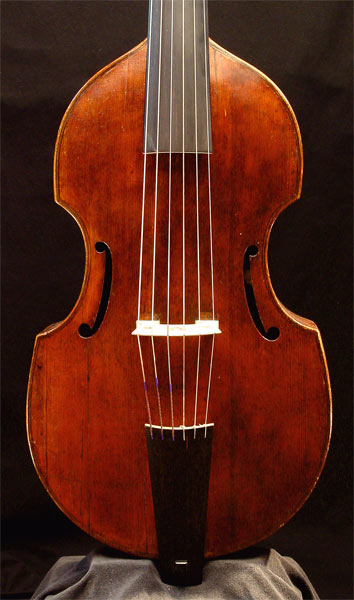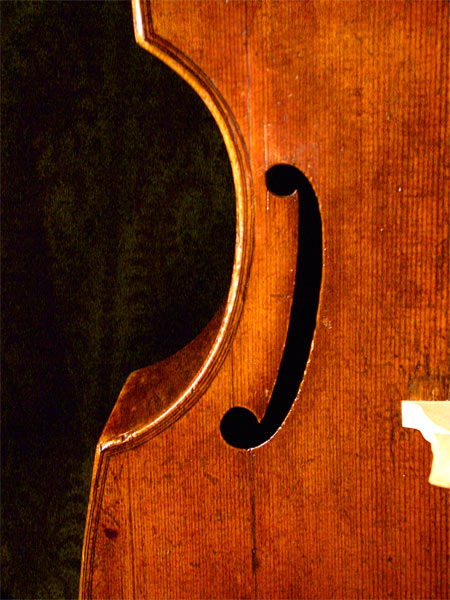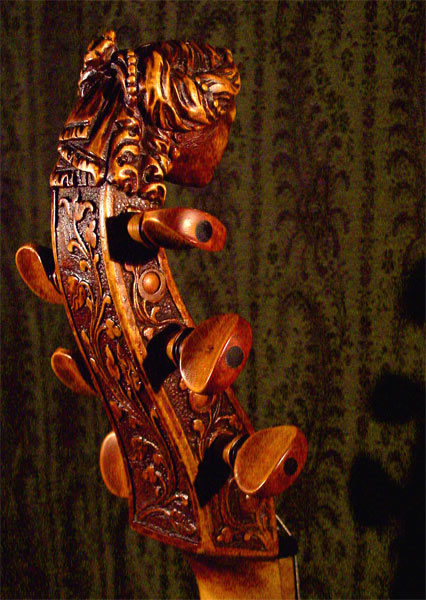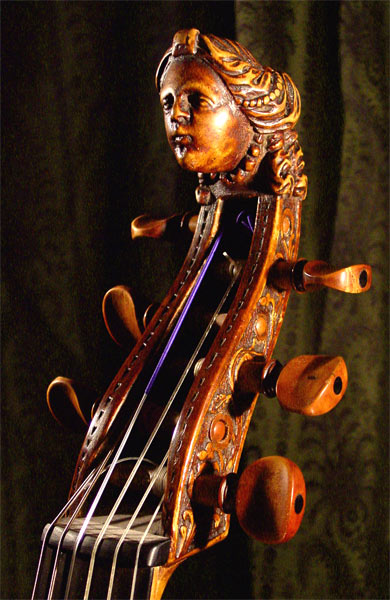 |
 |

 |
 |
Ex-Döbereiner, Ex-Heinitz
Although Joachim Tielke is often referred to as the “Stradivarius of the viola da gamba” and enjoyed an international reputation, the question has been raised, whether he was a real violin maker at all or merely a dealer, selling the wares worldwide from innumerable Hanseatic instrument suppliers. Nevertheless, the “Tielke” violas da gamba were praised for their “strong and brilliant sound” way into the 18th C. and were preferred for solo playing. Bach’s employer, Prince Leopold von Anthalt-Coethen, played on a Tielke, which is preserved there. Tielke had a penchant for richly decorated instruments: nothing was spared in the accoutrements, often employing ivory and ebony garlands and flowers, tortoise shell, carved heads, etc., a clear sign that these instruments were destined for affluent aristocratic and patrician clientele. Our example is – by his standards – modestly ornate: the pegbox, decorated with vegetal and flower motifs, carries a woman’s head in the style of the galleon’s figures of Hanseatic ships; the back shows an appliqué with stylised ivy.
The Tielke viola da gamba in the collection has an illustrious past, quite a remarkable one! It made history throughout the 20th Century! In the year 1905 Christian Döbereiner (1874-1961) had his portrait taken with the Tielke viol. He was a real pioneer spirit in the service of Early Music. Döbereiner founded the “Verein für Alte Musik München” (Association for Early Music Munich), he defended like a true Ajax the use of historical instruments at a time when one could experience the premiere of a Mahler Symphony! And this he did under great personal initiative and – to a good extent – also great personal sacrifice. Most likely with this very same viol he performed in the first integral, unabridged performance of the St- Matthew Passion by Bach, which took place in Munich in 1906 and included both arias on a viola da gamba. He went on tour with this viola da gamba all over Spain in the 1920’s: press reports and critics report of the grand successes of his concerts. A part of the Döbereiner archive has been courteously placed at our disposal by his grandson, Klaus Döbereiner, which is being analysed and studied at present. This includes recordings on the Tielke viol! (Christian Döbereiner ordered and owned the Baryton by Jaura in our collection: Nr. 120).
Prominent soloists who previously owned and performed on this viola da gamba:
See: Christian Döbereiner
(1874-1961)
See: Eva Heinitz
(1907-2001)
Somewhat later, the renowned musician, Eva Heinitz (1907-2001), acquired this viola da gamba, with which she is portrayed for the first time in the 1920’s. She was forced to leave her native Berlin before the war, went to Paris, settled later in Seattle, Washington, where she led a notable career as a soloist, both on the violoncello and the viol, and as an outspoken pedagogue until her death in 2001. A small archive on Heinitz has been made available to us, which includes recordings on the Tielke viol of the concerts with orchestra by Telemann and Tartini. The archive is being studied at present. Shortly before her death I took up contact with Eva Heinitz; her viol was being sold by a New York dealer and had already been promised to a museum. She acquiesced and ordered that the viol be sold to me, claiming that it was her wish that the viol go to a musician that would perform on it and not into a glass case. I am very thankful that she made this decision. It means that the viol will rest in the hands not only of myself, but also of many musicians to come. It is indeed a singularly great privilege to have such a wonderful instrument in the collection which participated so actively in the modern History of Early Music
.
Literature:
Günther Hellwig: Joachim Tielke, ein Hamburger Lauten- und violenmacher der Barockzeit
(Verlag Das Musikinstrument, 1980), p. 161
Body length 678 mm Upper width 305 mm Middle width 202 mm Lower width 375 mm Rib height 109 mm String length 654 mm